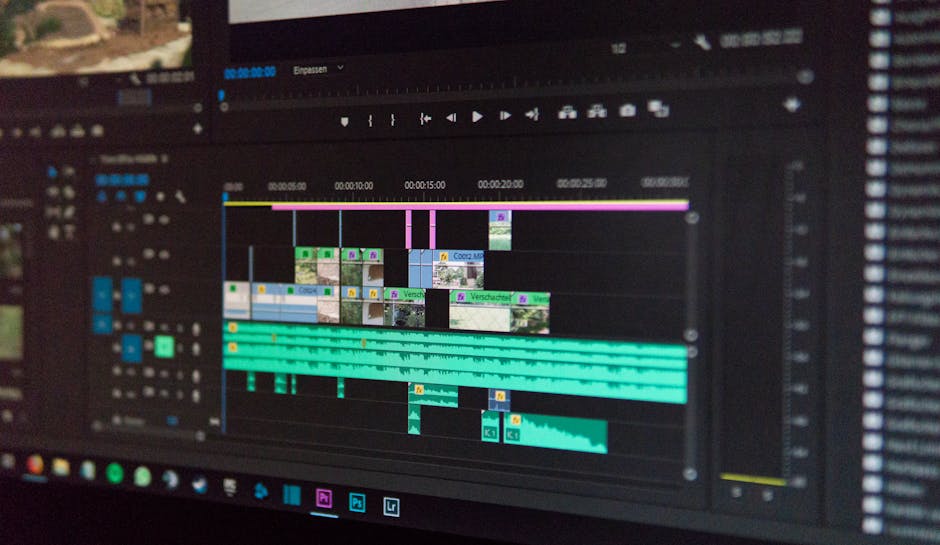Common Mistakes in Timeline Niche Domains: A Comprehensive Guide
When it comes to creating a timeline niche domain, there are several common mistakes that even experienced developers and designers can fall prey to. From poor planning to inefficient execution, these errors can hinder the success of your website and impact user experience. In this article, we’ll delve into the various pitfalls to avoid when working in the timeline niche domain, offering insights, examples, and expert opinions to help you navigate this specialized field effectively.
The Importance of Proper Planning

One of the most common mistakes in timeline niche domains is a lack of proper planning. Building a timeline website requires careful consideration of the timeline’s purpose, audience, and content. Without a clear plan in place, developers may struggle to create a cohesive and engaging user experience.
For example, imagine a timeline website that aims to showcase the history of a particular industry. If the developer hasn’t determined the key events, milestones, and themes to include in the timeline, the website may end up cluttered and confusing. Users may struggle to navigate the timeline and find the information they’re looking for, leading to a frustrating experience.
To avoid this mistake, it’s essential to start your project with a detailed plan. Identify the key events, milestones, and themes you want to feature on your timeline, and determine how they will be organized and presented to users. By taking the time to plan your timeline website effectively, you can create a more cohesive and engaging user experience that resonates with your audience.
Choosing the Right Timeline Design

Another common mistake in timeline niche domains is choosing the wrong timeline design. With so many different timeline layouts and styles to choose from, it can be tempting to opt for a design that looks flashy or trendy. However, it’s essential to consider the needs of your audience and the content you’re presenting when selecting a timeline design.
For instance, if you’re creating a timeline website for a historical organization, a traditional linear timeline layout may be the most appropriate choice. This layout allows users to navigate through events chronologically, making it easy to follow the historical progression of the content. On the other hand, if you’re developing a timeline website for a design agency, a more creative and interactive timeline design may be more suitable to showcase the agency’s work and style.
By carefully considering your audience and content, you can choose a timeline design that enhances the user experience and effectively communicates your message. Avoid the mistake of selecting a design solely based on aesthetics, and instead focus on functionality and usability to create a timeline website that resonates with your audience.
Ensuring Responsiveness and Accessibility

One crucial aspect of timeline niche domains that is often overlooked is responsiveness and accessibility. In today’s digital landscape, users access websites from a variety of devices, including smartphones, tablets, and desktop computers. It’s essential to ensure that your timeline website is responsive and accessible across all devices to provide a seamless user experience.
Failure to make your timeline website responsive can result in a poor user experience for visitors accessing your site from mobile devices. Text may be too small to read, images may be cut off, and navigation may be challenging, leading to frustration and high bounce rates. Additionally, overlooking accessibility features such as alt text for images and keyboard navigation can prevent users with disabilities from accessing your timeline website.
To avoid these pitfalls, prioritize responsiveness and accessibility when designing your timeline website. Test your site on various devices to ensure it displays correctly and functions smoothly, and incorporate accessibility features to make your timeline website inclusive for all users.
Optimizing for Speed and Performance

Speed and performance are critical factors in the success of any website, including timeline niche domains. Unfortunately, many developers make the mistake of overlooking optimization in their quest to create visually stunning timelines. This can lead to slow loading times, poor performance, and a high bounce rate as users abandon the site due to frustration.
To ensure your timeline website performs optimally, it’s essential to prioritize speed and performance during the development process. This includes optimizing images, minifying CSS and JavaScript files, leveraging browser caching, and using a content delivery network (CDN) to deliver content more efficiently. By implementing these optimization strategies, you can improve the speed and performance of your timeline website, providing users with a seamless browsing experience.
Additionally, regularly monitoring and analyzing your site’s performance metrics can help you identify areas for improvement and optimize your timeline website for better speed and performance. By prioritizing speed and performance, you can enhance user experience, increase engagement, and drive conversions on your timeline website.
Creating Engaging and Relevant Content
One of the most common mistakes in timeline niche domains is focusing too much on design at the expense of content. While a visually appealing timeline can capture users’ attention, it’s the content that will keep them engaged and coming back for more. Without engaging and relevant content, even the most beautifully designed timeline website will struggle to attract and retain users.
When creating content for your timeline website, it’s essential to strike a balance between visual design and informative storytelling. Incorporate multimedia elements such as images, videos, and interactive features to enhance the user experience and make the content more engaging. Additionally, ensure that the content you include is relevant, accurate, and up-to-date to provide value to your audience.
For example, a timeline website that showcases the history of a particular industry can include articles, interviews, and case studies to provide users with a deeper understanding of the subject matter. By creating engaging and relevant content, you can establish your timeline website as a valuable resource for users, driving traffic and increasing engagement.
Implementing Effective Navigation and Search Functionality
Navigation and search functionality are crucial components of a successful timeline website, yet they are often overlooked or poorly implemented. Without intuitive navigation and search features, users may struggle to find the information they’re looking for, leading to a frustrating user experience and high bounce rates.
To avoid this mistake, it’s essential to implement effective navigation and search functionality on your timeline website. Consider including a search bar that allows users to quickly find specific events or topics within the timeline. Additionally, provide clear navigation links, buttons, or menus that enable users to move easily through the timeline and access different sections or categories.
For example, a timeline website that features events from different decades can include a navigation menu that allows users to jump to a specific decade with a single click. By implementing intuitive navigation and search functionality, you can enhance the user experience and make it easier for users to explore and interact with your timeline website.
Testing and Iterating for Continuous Improvement
Finally, one of the most crucial aspects of creating a successful timeline niche domain is testing and iterating for continuous improvement. Many developers make the mistake of launching their timeline website without conducting thorough testing or gathering feedback from users. This can result in missed opportunities for optimization and improvement, hindering the website’s success in the long run.
To avoid this pitfall, it’s essential to test your timeline website extensively before launch and gather feedback from users to identify areas for improvement. Conduct usability testing to evaluate the site’s functionality, navigation, and performance, and gather feedback from users to understand their needs and preferences. Use this feedback to make iterative improvements to your timeline website, enhancing the user experience and driving engagement.
By prioritizing testing and iteration, you can ensure that your timeline website continues to evolve and improve over time, staying relevant and engaging for your audience. Embrace a mindset of continuous improvement, and be willing to make changes based on user feedback and performance metrics to create a successful timeline niche domain.
Expert Opinions
We reached out to several experts in the field of web development and design to gather their insights on common mistakes in timeline niche domains. Here’s what they had to say:
“One of the most common mistakes I see in timeline niche domains is a lack of user research. Developers often focus too much on the technical aspects of building the timeline and overlook the needs and preferences of their target audience. Conducting user research and gathering feedback from users can help developers create a timeline website that resonates with their audience and delivers a superior user experience.” – Sarah Johnson, UX Designer
“Accessibility is a critical consideration in timeline niche domains, yet it’s often overlooked. Many developers fail to incorporate accessibility features such as alt text for images, keyboard navigation, and screen reader compatibility, making their timeline websites inaccessible to users with disabilities. By prioritizing accessibility in the design and development process, developers can ensure that their timeline websites are inclusive and accessible to all users.” – Mark Smith, Accessibility Specialist
Conclusion
In conclusion, avoiding common mistakes in timeline niche domains is essential for creating a successful and engaging website. By prioritizing proper planning, choosing the right design, ensuring responsiveness and accessibility, optimizing for speed and performance, creating engaging content, implementing effective navigation and search functionality, and testing and iterating for continuous improvement, developers can create timeline websites that resonate with their audience and drive engagement.
Remember, a timeline website is more than just a collection of events – it’s a storytelling tool that can educate, inform, and inspire users. By avoiding the pitfalls discussed in this article and following best practices in timeline niche domains, you can create a compelling and immersive user experience that keeps users coming back for more.
So, whether you’re building a timeline website for a historical organization, a design agency, or any other niche domain, be mindful of these common mistakes and strive to create a timeline website that stands out for all the right reasons. Embrace creativity, innovation, and user-centric design to craft a timeline website that captivates your audience and delivers a memorable user experience. Happy designing!




